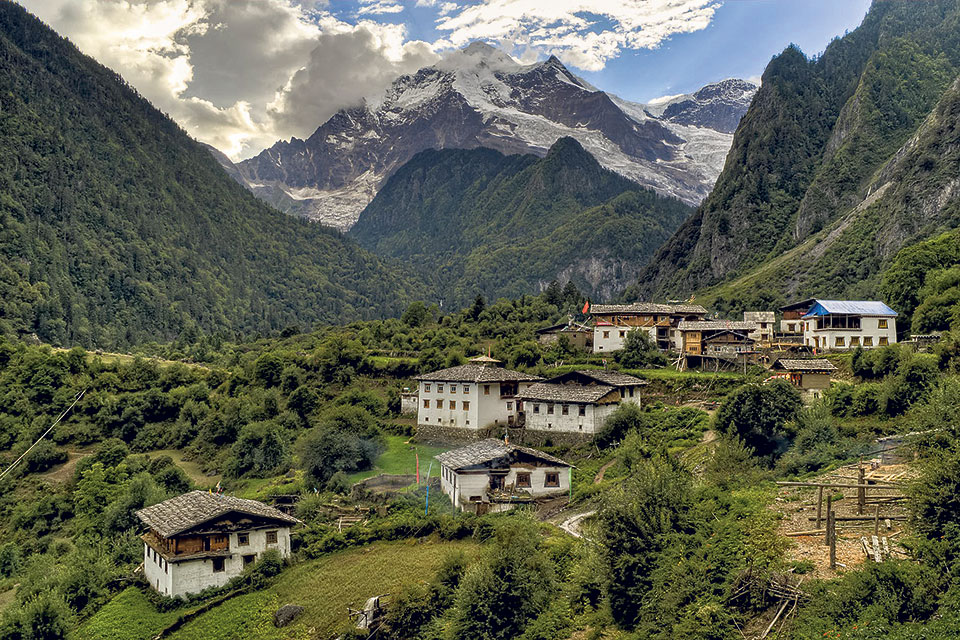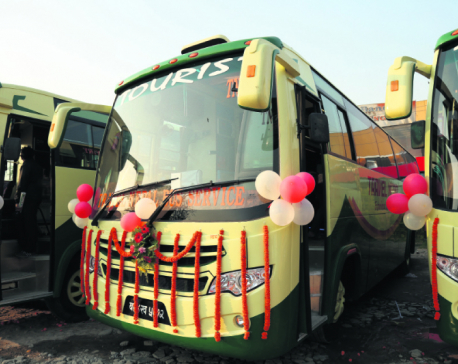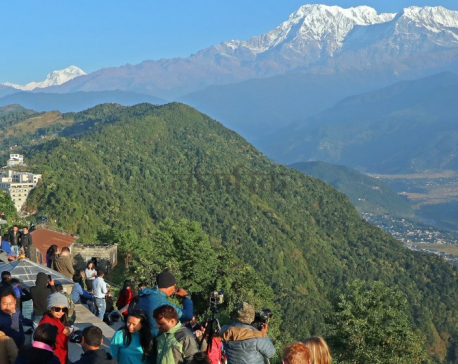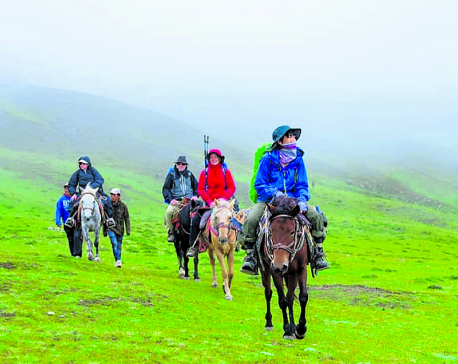
OR

With the advent of technology more and more businesses involved in the service sector are embracing digital forms of service providing. And the intent is to stand out, ease the reach to services, and do it in their own way. Everyday startups in Nepal launch projects and events to relay their attempts at being innovative and convey their sincerity in wanting to help.
Kathmandu based tech company HoneyGuide is one that was established with the aim of bringing people closer to the mountains. Founded by Ashish Shrestha, Abhishek Shrestha and Diwaker Ghimire, all avid travelers, Honey Guide was the trio’s effort at establishing an accessible and comprehensible system of traveling and to connect local service providers as well as give straightforward information on locations at agreeable costs. For 20,000 users and counting, HoneyGuide is the digital slip-in guide for those who wish to travel at minimum expenses (which is everyone) and with very less dependency on others.
While working on digitizing means of traveling and directly dealing with the local service providers (homestays, porters, guides among others), the team felt a need to raise concern on the issues of traveling in Nepal. So to address such issues and discuss Nepal’s potential as a tourist puller, HoneyGuide organized a two session panel discussion on February 2, 2019 at Marshyangdi Hotel, with the dialogue focusing on ‘Empowering the Himalayas’.
The first session, “Youths in Destination Promotion,” brought forth Mahabir Pun (Social Activist), Sisan Baniya (YouTuber), Jason Shah (Founder of Nepali Travelers), Sunil Sharma (Senior Manager at Nepal Tourism Board) and Khim Bahadur Chhetri (Videographer at Ghumante). The discussion involved inspecting ethical factors of behavior, individual contributions and the ideas, motivations of the youth.
Pun pointed that the Nepali tourism industry has a strong internal system of regulation with the presence of TAAN (Trekking Agencies Association of Nepal), NTB (Nepal Tourism Board), CTEVT (Council for Technical Education and Vocational Training) but that it was desperately in need of the infrastructure to support it. “We have enough software but it’s the hardware we lack. We need more homestays, more roads, and more trails to support our industry,” he said. Trackers are yet to be used in high risk treks and directions are yet to be digitized.
With the government declaring 2020 as the ‘Visit Nepal Year’, a greater influx of tourists is expected but the concern is whether the tourism industry is capable of accommodating such large numbers. There’s a noticeable lack of infrastructure as it is, so the feasibility of undertaking a mission of bringing in two hundred thousand tourists was scrutinized. And the role of social media and the potential contribution of the youth were also highlighted.
Sharma explained that despite noticeable growth in tourism, Nepal has yet to mature with the growth. He said, “We have content writers with academic backgrounds in English but without a taste of the wilderness. We have thus been unable to produce quality content that can truly convey the essence of Nepal.”
The interest in domestic travel itself is on the rise and videographers Baniya and Chhetri shed light into this growing interest of the youths. As a country, the progress remains to be seen but the potential is boundless, they all seemed to agree.
The second session focused on the present issues of local service providers and the need to address them before making plans of leap progresses. Tripple P Gurung (hotelier), Laxman Adhikari (Chairperson of ward four in the Everest region) and Jeevan Thapa Magar (Vice President of TAAN) engaged in discussing the concurrent problems.
Rights of associations of the onsite workers (cooks, porters, guides) were addressed. Splitting each pay of service with NTB, TAAN and insurance trusts leaves most guides unable to afford basic food, especially considering the exorbitantly high rates way up in the mountains.
The entire purpose of the panel discussion was to address issues in the tourism industry and derive practical solutions especially with the involvement of the youth through the correct use of digital platforms. Sharing a piece of daily life in a snap is an attempt (even if it’s just a shot of the crowded roads), introducing new forms of information dissemination is another. The audience was comprised of travel enthusiasts, lodge owners and individuals from various travel associations.
While it was apparent that Nepal’s potential as a travel hub is untapped, the effort to explore ways to change that was also palpable. An entire generation of youths is focused on promoting and exploring Nepali destinations and thus, supported by the senior and experienced group of people, a wave of change in the tourism business is quite imminent.
You May Like This

Travel Nepal Bus starts operating Tata Motors’ tourist coaches
KATHMANDU, APRIL 11: Travel Nepal Bus Service Pvt Ltd has started a new bus service using coaches that have facilities... Read More...

Tourism on the path of recovery as around 100,000 foreign tourists visit Nepal in March
KATHMANDU, April 2: Around 100,000 tourists visited Nepal in March this year. ... Read More...

Born to travel
It’s hard to believe that Samde Sherpa wasn’t born into a family of avid travelers. Today he is one of... Read More...







Just In
- NRB to provide collateral-free loans to foreign employment seekers
- NEB to publish Grade 12 results next week
- Body handover begins; Relatives remain dissatisfied with insurance, compensation amount
- NC defers its plan to join Koshi govt
- NRB to review microfinance loan interest rate
- 134 dead in floods and landslides since onset of monsoon this year
- Mahakali Irrigation Project sees only 22 percent physical progress in 18 years
- Singapore now holds world's most powerful passport; Nepal stays at 98th











Leave A Comment